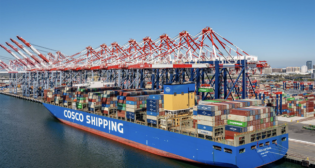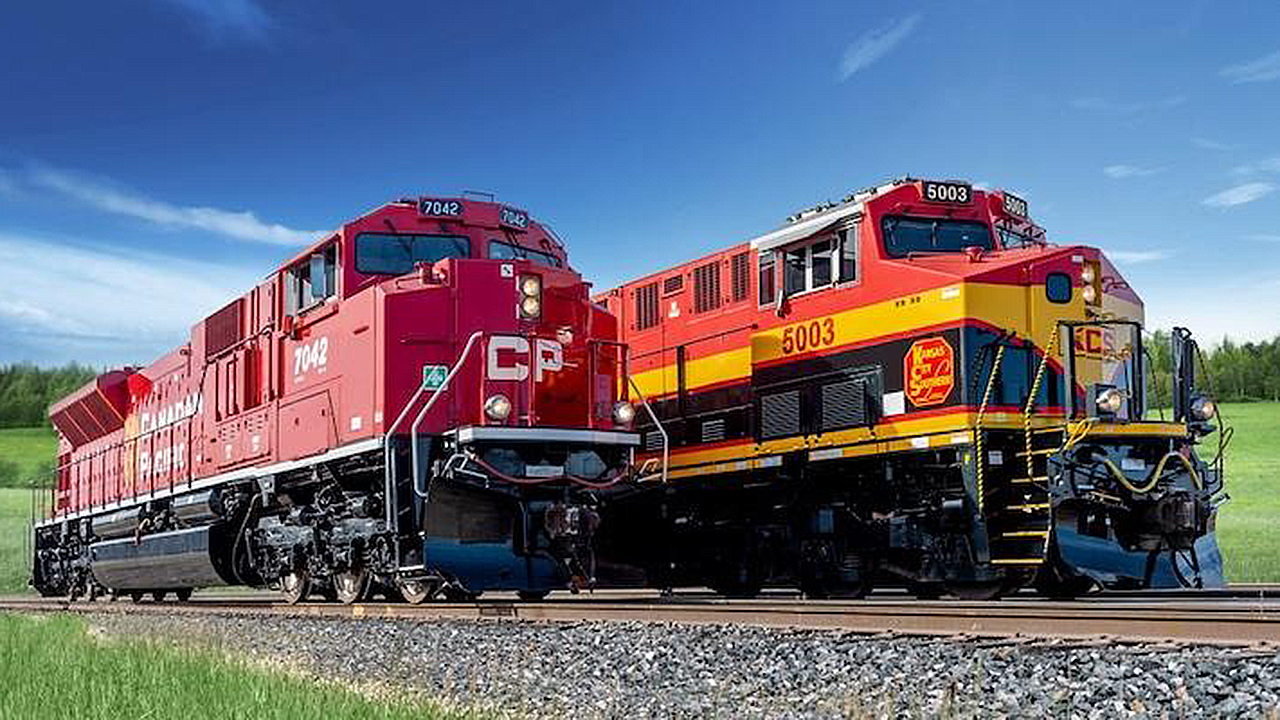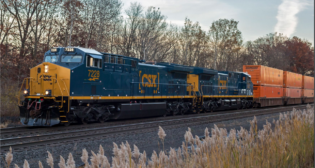
TD Cowen Surveys: ‘Slight Positive’ Business Growth; ‘Mild Negative’ Railcar Demand
Written by Jason Seidl, Matt Elkott, Bhairav Manawat, Elliot Alper and Uday Khanapurkar , TD Cowen
CPKC photo
Our Fourth-Quarter 2023 Rail and Rail Equipment Surveys generated a positive read-through for the rail group, albeit with a mild negative for railcar manufacturing.
4Q23 Rail Survey
Expected rate increases were +3.4%, improving sequentially though still below the survey’s long-term average. Business growth expectations modestly improved, and economic confidence grew. Cross-border shippers into Mexico expect to move more freight onto the intermodal network in the coming year. We view the survey results as a slight positive for the rail group.
Pricing Expectations Increased Modestly Sequentially
Shippers anticipate rail prices will increase by 3.4% over the next 6-12 months, 20bps above last quarter’s survey. The 3.4% came in below the survey’s long-term average of 3.6%. This is the first quarter we have seen sequential growth in pricing expectations (albeit modest) since our 4Q22 survey, though commentary from our recent private industry call pointed to a challenging intermodal pricing picture in 2024, and our panelist was hopeful to hold intermodal rates flat but acknowledged that they may have to drop them a few points to preserve volumes on the network. We continue to see intermodal pricing as a late 2024 recovery at best. The sequential strength in pricing forecasted by our survey participants may be coming from long-term contractual renewals that are passing on inflationary costs.
Business Growth Outlook Remained Relatively Unchanged for Fourth Quarter in A Row
Business growth expectations ticked up 10 bps sequentially to 1.8%, below our trucking survey which saw business outlook improve substantially, and the 1.8% is still notably below the survey’s long-term average of 3.6%. Economic confidence rebounded this quarter, back to levels we saw in 2Q23, an increase of 16 percentage points sequentially (similar confidence was seen in our trucking survey). 39% of shippers expect their employee count to increase over the next 12 months (up 3 percentage points sequentially), while 9% expect their employee count to decrease (down 2 percentage points sequentially).
Cross-Border Mexico Shippers Anticipate Freight Shift to Intermodal
~38% of shippers responded that they ship cross-border from Mexico and a little more than half of that group utilizes a cross-border intermodal service. Our survey indicates that cross-border shippers anticipate shifting 17% of their volumes off the road and onto a cross-border intermodal service in the coming year. We acknowledge a wide range of responses from 2% to as high as 52%. Shippers also face a wide range of on-time performance with their intermodal service from the high 90s to less than 10% in some instances. Our survey results indicate that Ferromex (we note UNP has ~25% stake in the company) and the CPKC-CSX-G&W services are the most popular, with 12% of cross-border participants each responding that they use those services.
Thoughts Into Rail Earnings
Improving pricing expectations, business growth marginally increasing, and expanding economic confidence leads to a positive read-through for the rail group, while acknowledging results were mostly below the survey’s average. A challenging 2023 should set the rail group up for volume growth (mostly on the intermodal side) in 2024 and improving service metrics as more carloadings come online is encouraging. An inflection in pricing expectations, while very modest, may prove resilient despite an OTR market that continues to putter around trough levels. We continue to see intermodal pricing recovery a late 2024 story at best given the overcapacity in the trucking market. Rail volumes showed y/y growth to begin 2024 but continue to track below 2019 levels, what we believe to be a better comparison.
4Q23 Rail Equipment Survey
The survey results are a mild negative for railcar demand, perhaps more so for manufacturing than leasing. We are neutral-to-positive into the print on TRN and see a favorable setup for the company in 2024.
All Order Activity Metrics Deteriorated in 4Q23
When it comes to order activity, we consider four key metrics: (1) The percentage of “all participating shippers” who will or may order railcars. (2) The conviction level about ordering (the split between “yes” and “maybe”) within this “all participating shippers” group. (3) The percentage of “same shippers” who will or may order railcars. (4) The conviction level about ordering (the split between “yes” and “maybe”) within this “same shippers” group.
In our 4Q23 survey, all four metrics deteriorated somewhat. The slight deterioration in order outlook and conviction in our survey could be partly a function of extended manufacturing lead times, not just the underlying need for equipment. One potential risk to manufacturers is if lead times do not shorten quickly enough to take advantage of the current railcar supply tightness, because if rail traffic remains weak and service continues to improve, the railcar supply tightness could be alleviated by further weakening in demand, not higher railcar production.
Decreased Level of Certainty Among Shippers
Roughly 39% of all shippers surveyed said they will or may order railcars in the next 12 months, down from 42% in our 3Q23 survey. About 61% now say they do not plan to order railcars, compared to 58% in 3Q23. Within the 39% of total shippers who are contemplating orders in the next 12 months, 55% said “yes,” they plan to place orders, versus 60% in 3Q23, and 45% said “maybe,” compared with 40% in 3Q23. This could mean a lower level of certainty about ordering within the total shipper group.
On a same-shipper basis, about 33% of same respondents in 4Q23 said they will or may order railcars, compared to 44% in our 3Q23 survey. Roughly 67% do not plan to order railcars, increasing from 56% in our 3Q23 survey. Within the 33% of same shippers who are contemplating orders in the next 12 months, 56% said “yes,” they plan to place orders (60% in 3Q23), while 44% said “maybe” (40% in 2Q23). This could mean a decreased level of certainty about ordering within the same-shipper group.



